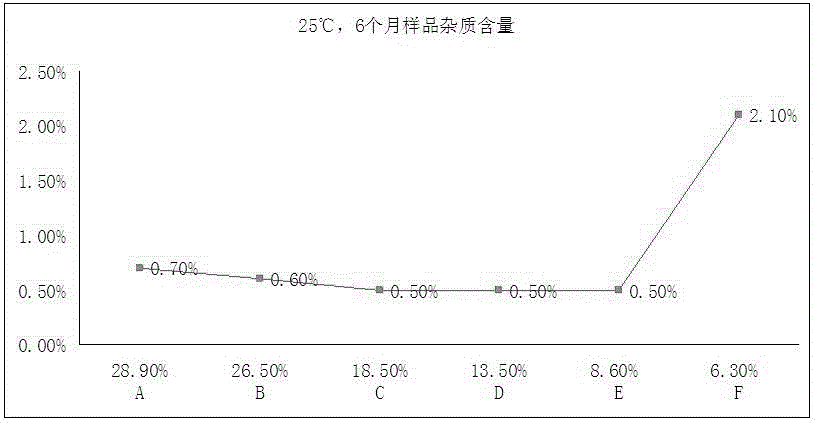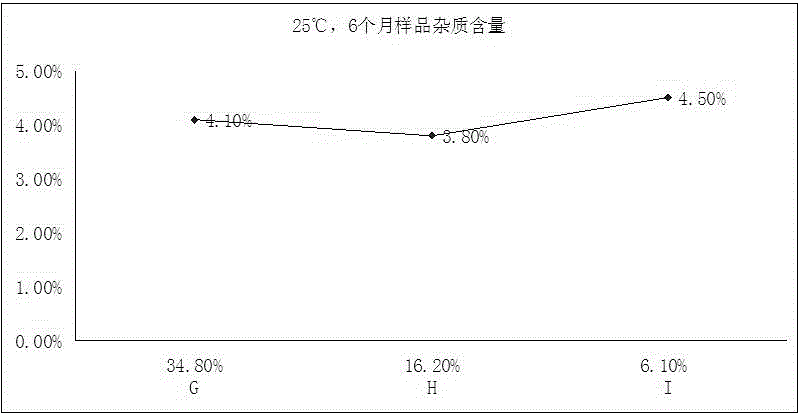Hydrate of echinocandin B mother nucleus or salt thereof, preparation method and application thereof
A technology of echinocandin and hydrate, which is applied in the field of hydrate with echinocandin B core or its salt and its preparation, can solve the problems of poor stability of echinocandin B core and achieve It is conducive to long-term preservation, reduces production costs, and facilitates industrial production
- Summary
- Abstract
- Description
- Claims
- Application Information
AI Technical Summary
Problems solved by technology
Method used
Image
Examples
preparation example Construction
[0068] The preparation of embodiment 1 echinocandin B parent nucleus crude product
[0069] With reference to the method described in US4293489, the crude product of the echinocandin B parent nucleus represented by formula I was prepared.
Embodiment 2
[0070] Example 2 Preparation of hydrates A, B, C, D, E, F of echinocandin B parent nucleus hydrochloride
[0071]
[0072] At 40°C, 10.0 g of the solid powder of the compound represented by formula I prepared in Example 1 was dissolved in 30 ml of water and stirred for 30 minutes to completely dissolve the compound represented by formula I. The pH was adjusted to 3.5 with hydrochloric acid, the solution was cooled to 10°C to 20°C, stirred for 20 hours, and filtered to obtain the hydrate of the compound represented by formula I-1. The hydrate of the compound represented by formula I-1 is vacuum dried at 20°C to 25°C. After drying for 1 hour, 1.0 g of hydrate was taken and named as hydrate A of the compound represented by formula I-1, and the mass percentage content of water in hydrate A was measured to be 28.9%. The remaining sample was continued to be dried for 1 hour, and 1.0 g of the sample was sampled and named as hydrate B of the compound represented by formula I-1. ...
Embodiment 3
[0081] Example 3 Preparation of hydrates G, H, I of echinocandin B parent nucleus hydrochloride (influence of pH value)
[0082] Take 8.75 g of the crude echinocandin B (compound I) obtained in Example 1, add 30 ml of water and 5 ml of methanol, stir to dissolve at 25-35°C, adjust the pH to 2.2 with hydrochloric acid, and stir to dissolve at room temperature. The solution was cooled to -5 to 5° C., stirred for 10 hours, and filtered to obtain a hydrate of the compound represented by formula I-1. The hydrate of the compound represented by formula I-1 is vacuum dried at 20°C to 25°C. After drying for 1 hour, 1.0 g of hydrate was taken and named as hydrate G of the compound represented by formula I-1, and the mass percentage content of water in G was measured to be 34.8%. The remaining sample was continued to be dried for 3 hours, and 1.0 g of hydrate was taken and named as hydrate H of the compound represented by formula I-1, and the mass percentage content of water in H was ...
PUM
 Login to View More
Login to View More Abstract
Description
Claims
Application Information
 Login to View More
Login to View More - R&D
- Intellectual Property
- Life Sciences
- Materials
- Tech Scout
- Unparalleled Data Quality
- Higher Quality Content
- 60% Fewer Hallucinations
Browse by: Latest US Patents, China's latest patents, Technical Efficacy Thesaurus, Application Domain, Technology Topic, Popular Technical Reports.
© 2025 PatSnap. All rights reserved.Legal|Privacy policy|Modern Slavery Act Transparency Statement|Sitemap|About US| Contact US: help@patsnap.com



